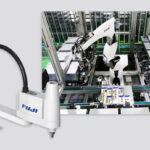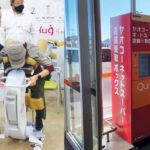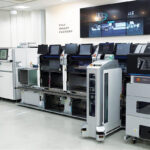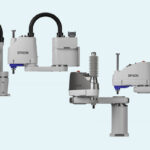ASIA ELECTRONICS INDUSTRYYOUR WINDOW TO SMART MANUFACTURING
FUJI Expands Lineup of Compact Articulated Robot
As part of efforts to expand its robot business, FUJI Corporation diversifies models of the SmartWing compact articulated robot. At the same time, the company develops applications to automate the printed circuit board (PCB) assembly process. Moreover, it started proposing applications to a wide range of businesses.
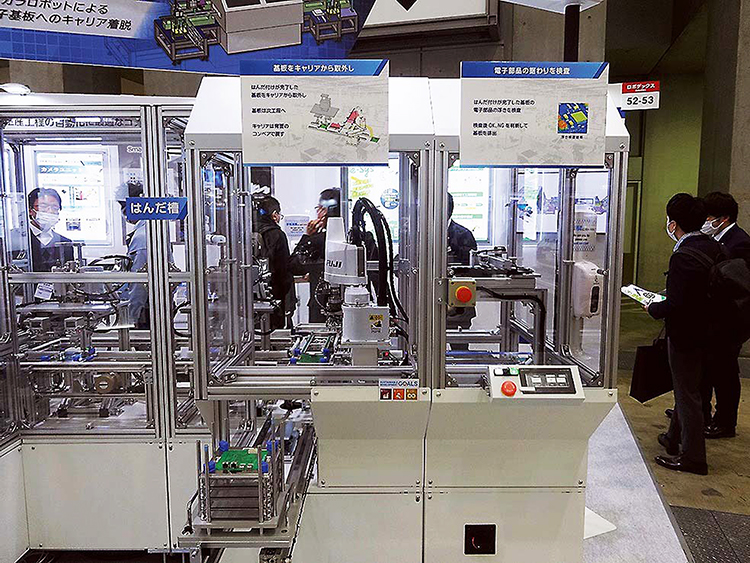
Compact Articulated Robots Business
In 2017, FUJI initiated the production of compact articulated robots in full swing. Since then, the company has expanded its articulated robot models in stages.
At present, it provides in its horizontal articulated (SCARA) robot lineup SW-RXS3-R40 with transportable weight of 3kg, and SW-RXS6-R50/R60/R70 with transportable weight of 6kg. Also, the company brought to market vertical articulated robots: SW-RXV4-R56 with transportable weight of 4kg and SW-RXV8-R90 with 8kg.
SCARA robots meet the need to automate simple manual work. Specifically, they feature a simple structure and slim robot arm, enabling installation with small footprints. Also, the originally developed Job Editor software supports programing work.
Particularly, SCARA robots are ideal for the automation of arranging nuts and washers, screw tightening, arranging screws, packing, arranging randomly stacked parts, sorting components, and insertion of tubes. They are ready for use immediately after installation without the need for teaching.
Hence, FUJI offers its SCARA robots to diverse industries, including the electronic equipment industry, which handles electronic components. Vertical articulated robots do not require teaching, either, and can be easily put into operation.
Meets Automation of PCB Process
At the same time, FUJI is also expanding the applications of SmartWing.
The company responded to the mounting needs to automate the manual PCB assembly process, like mounting of odd-formed components, in the surface mount technology (SMT) industry. Specifically, the company commercialized SW-BA Robot Cell for PCB assembly. The SW-BA makes the use of SmartWing.
The company made available various functions necessary to automate manual works in the insertion process of connectors, aluminum electrolytic capacitors, and other odd-form lead components into packages. These packages are offered at low costs.
Specifically, the platform comprises a SCARA robot with transportable weight of 6kg and a link length of 700mm, and two types of component recognition cameras: a hand camera installed at the end of the robot arm and a work camera installed at the base.
The hand camera recognizes the insertion position of PCBs and pickup position of components to be supplied. Meanwhile, the work camera recognizes component shape, insertion pin position and pitch, and polarity of components through image recognition of components from the bottom.
Also, the correction technique links image recognition information obtained by these two cameras and the robot arm. It enables the automation of insertion work that requires high accuracy. The SW-BA can supply randomly stacked parts and tray components in the same packaging as they came in. Furthermore, a single Robot Cell performs both the arranging and insertion processes.
In addition, FUJI has also developed a digital point soldering machine, which combines SmartWing and a sleeve soldering system.
Furthermore, FUJI codeveloped the e-Sys platform with Lattice Technology Co., Ltd., a Tokyo-based vendor of solutions using three-dimensional (3D) data. The e-Sys platform supports the works of robot system integrators. The e-Sys platform features 3D simulation, which prevents rework, and reduces time to market through virtual test run using digital twin.

